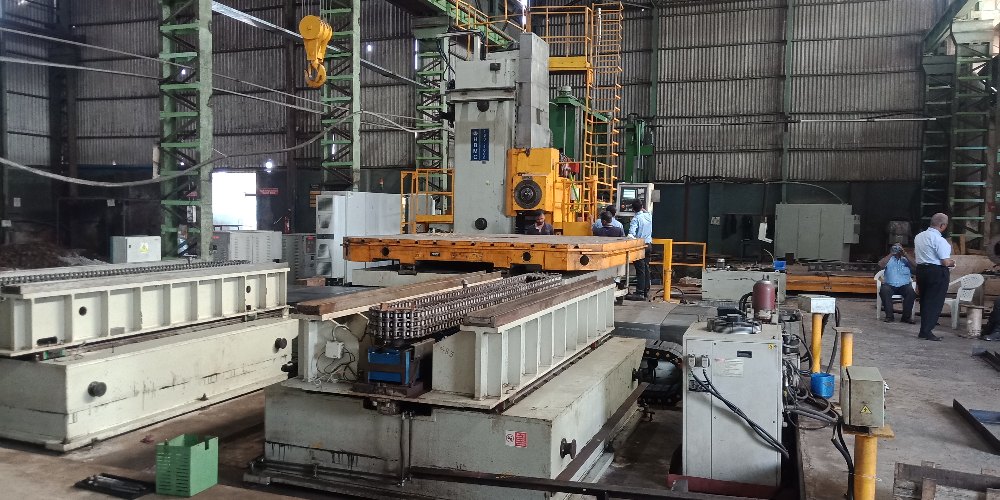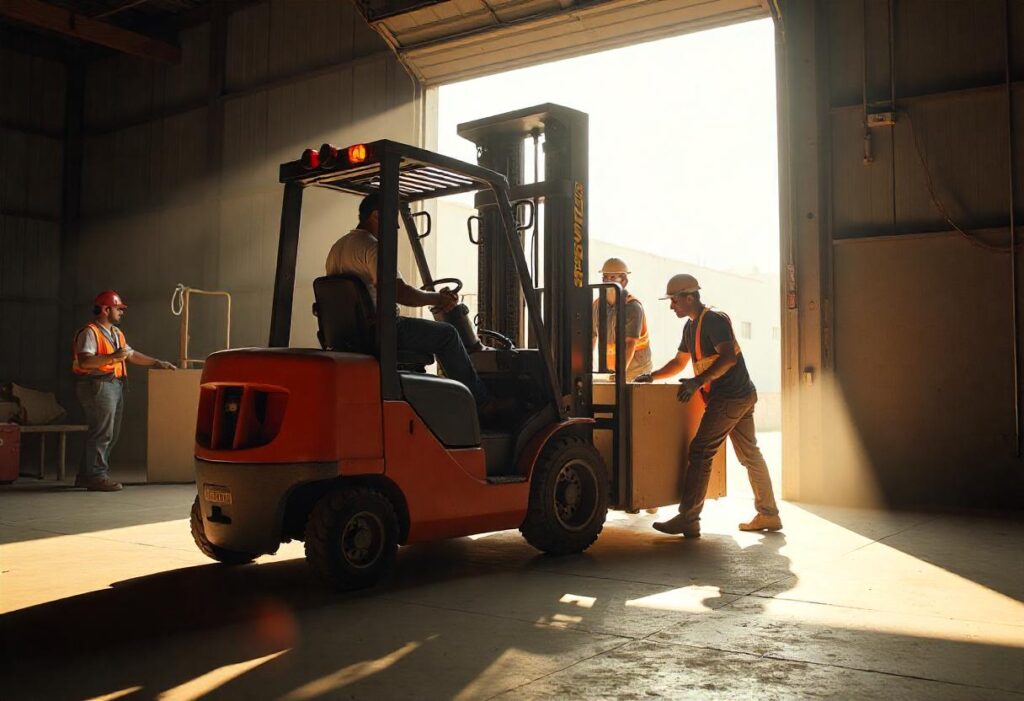Are you preparing to relocate your heavy machinery?
The process of moving industrial equipment can be complex and fraught with potential pitfalls. However, with careful planning and execution, you can ensure a smooth transition that minimizes downtime and protects your valuable assets.
This guide will walk you through the top 10 tips for a successful machine shifting relocation, covering everything from pre-move considerations to post-move inspections. By following these expert recommendations, you’ll be well-equipped to navigate the challenges of transporting your equipment safely and efficiently. Whether you’re moving a single piece of machinery or an entire production line, these insights will help you streamline the process and avoid costly mistakes. Consider partnering with OneWorld Logix as a potential company to assist with your relocation needs, providing expertise in logistics and equipment handling.

Planning Your Move: Key Pre-Move Considerations for Machine Relocation
Define the Scope and Timeline
When planning for machine shifting services, it’s crucial to define the scope of work and establish a realistic timeline. According to industry experts, this should include details on all steps involved and the responsibilities of each party. Consider factors such as production schedules, downtime, and potential disruptions to your supply chain. A well-structured plan will help minimize delays and ensure a smooth transition.
Assess Equipment and Location Requirements
Before initiating the machine relocation process, conduct a thorough audit of your equipment. As recommended by relocation specialists, apply unique asset tags and document the condition of each machine. This step is crucial for insurance purposes and helps identify any necessary repairs or upgrades.
Next, evaluate both the current and new locations. Consider:
- Access issues and ground conditions
- Environmental factors (temperature, humidity, cleanliness)
- Power requirements and utility connections
- Potential hazards or safety concerns
Experts suggest ensuring all necessary services, such as electricity and compressed air, are available at the new site before the move.
Assemble Your Team and Resources
A successful machine relocation requires a diverse team with varied expertise. According to relocation planning guides, your team should include project managers, health and safety experts, HR representatives, and equipment specialists. Don’t hesitate to seek professional help for areas outside your in-house capabilities .
Additionally, determine the necessary tools and equipment for the move. This may include:
- Forklifts and cranes
- Specialized rigging equipment
- Packing materials and crates for delicate components
Remember to secure adequate machinery movement insurance to protect your valuable assets throughout the relocation process.
By carefully considering these pre-move factors, you’ll be well-prepared for a smooth and efficient machine shifting experience.

Ensuring Safe Packaging to Prevent Damage During Machine Shifting
When it comes to machine shifting services, proper packaging is crucial to protect your valuable equipment during transit. Here are some key considerations to ensure your machinery arrives safely at its new destination:
Custom Crating Solutions
One size does not fit all when it comes to packaging heavy machinery. Standard shipping containers are often inadequate, potentially leading to damage. Opt for custom wood crates built to the exact dimensions of your equipment. This cost-effective solution provides a snug fit, minimizing movement during transport.
Secure Internal Packaging
Proper internal packaging is essential to prevent shifting and damage. Use vibration-absorbing materials, custom foam inserts, and corrosion inhibitors to protect sensitive components. According to packaging experts, it’s crucial to secure all loose parts and tools before transit.
Weight Distribution and Handling
Understanding the weight distribution of your machinery is critical for safe handling. Mark the center of gravity and include “lift here” indicators on the crate to ensure proper handling during loading and unloading. This step is vital for preventing accidents and damage caused by uneven weight distribution.
Protection Against Environmental Factors
Different transportation methods present unique challenges. For sea transport, protect against moisture and corrosion. When shipping by air or truck, secure fastening is crucial to withstand vibrations, turbulence, and sudden movements. Consider using vapor barriers and shrink wrapping for additional protection.
By implementing these packaging strategies, you can significantly reduce the risk of damage during machine relocation. Remember, partnering with experienced machine shifting services can provide tailored solutions for your specific equipment, ensuring a smooth and safe transition to your new location.
Top Loading & Unloading Tips for Machine Relocation Services
Prioritize Safety and Planning
When it comes to machine shifting services, safety should always be your top priority. Before beginning the loading process, conduct a thorough risk assessment to identify potential hazards. Ensure all personnel are equipped with proper personal protective equipment (PPE) and designate specific roles, including a driver and spotter to guide the loading process.
Prepare the Loading Area
For a smooth machine relocation, it’s crucial to prepare the loading area properly. Clean and level the loading surface to provide a stable, slip-resistant foundation for your equipment. This step is vital in preventing accidents and ensuring the machinery remains secure during transit.
Utilize Proper Equipment and Techniques
When loading heavy machinery, use appropriate equipment such as ramps, cranes, or forklifts. Gradually drive the equipment onto the trailer, being mindful of the shifting center of gravity. For particularly large or complex machinery, consider employing industrial rigging services with specialized lifting equipment to ensure safe and efficient loading.
Secure the Load
Once the machinery is loaded, it’s crucial to secure it properly. Use the appropriate number of tie-down points, ensuring chains and binders are correctly matched and tightened. Immobilize the equipment’s wheels using brakes, chocks, or cradles to prevent shifting during transport. This step is essential for maintaining the safety of both your machinery and other road users during the relocation process.

Unloading with Care
When you reach your destination, approach the unloading process with the same level of caution as loading. Clear and level the unloading site, conduct a walkthrough, and slowly back the equipment down the ramp with a spotter guiding the process. After unloading, perform a thorough inspection of the machinery to ensure it’s in proper working condition and ready for operation in its new location.
By following these loading and unloading tips, you can significantly enhance the safety and efficiency of your machine relocation services, minimizing the risk of damage or accidents during the move.
Post-Move Inspection: Ensuring Operational Readiness
Conduct Thorough Equipment Testing
After completing your machine relocation, it’s crucial to conduct comprehensive post-move equipment testing. This step ensures the functionality and accuracy of your machinery in its new environment. Compare pre-move and post-move performance, including calibration, functionality testing, and validation. Allow time for equipment to acclimate to the new location before testing. Document all test results meticulously for regulatory compliance and quality assurance purposes.
Address Performance Issues Promptly
If you identify any performance issues during testing, address them immediately. This may involve recalibration, adjustments, or seeking manufacturer support. For specialized equipment, more extensive testing or validation may be necessary to meet industry-specific requirements. Prompt action helps maintain operational efficiency and prevents costly downtime.
Perform an Operational Readiness Assessment
Conduct a comprehensive operational readiness assessment to evaluate whether all systems, personnel, and procedures are prepared for full operation in the new environment. This assessment should cover:
- Equipment evaluation
- Utility and infrastructure assessment
- Safety and compliance checks
- Personnel readiness
- Process validation
- Contingency planning
By thoroughly assessing these areas, you can identify and address any potential issues before they impact your operations.
Ensure Regulatory Compliance
Maintaining regulatory compliance is critical during the relocation process. Identify relevant regulations, develop compliance policies, and provide employee training. Thorough documentation of all steps taken during the move and post-move inspection is essential for demonstrating compliance to regulatory bodies.
By following these steps, you can ensure a smooth transition and minimize disruptions to your operations after utilizing machine shifting services. Remember, a successful relocation goes beyond just moving equipment – it’s about maintaining operational readiness in your new location.

Conclusion
As you embark on your machine shifting relocation, remember that careful planning and attention to By following these top 10 tips, you’ll be well-equipped to navigate the complexities of moving heavy machinery with confidence.
As you prepare for your machine shifting relocation, trust OneWorld Logix to handle the complexities with professionalism and care. We follow a meticulous process that includes thorough pre-move assessments, secure packaging, strategic loading, expert transportation, careful unloading, and post-move inspections to verify your equipment is ready for operation. All these steps have been diligently followed by OneWorld Logix to ensure a smooth transition. With our commitment to timely execution, customized solutions, and ongoing communication, we minimize downtime and protect your investment. Choose OneWorld Logix for a seamless relocation experience book our services now and move your business forward with confidence!
